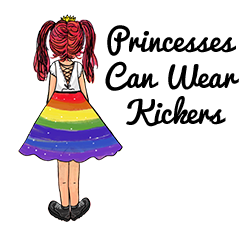Q: How can I write better with dysgraphia? A: follow this guide
I’m often asked ‘how can I write better with dysgraphia’ and unfortunately there is no easy answer. There is no one-cure fits all and actually there are no cures at all. Just strategies to strengthen fine motor skills and ways to cope with it.
Dysgraphia is a very specific learning difficulty affecting fine motor skills, and in particular, handwriting. Every aspect of handwriting is a challenge for any child with dysgraphia from pen grip to word spacing to letter formation. Organisation of sentences is also often affected.
Producing any written work is usually difficult and painful. Children can experience cramps, fatigue and even anxiety. Over time and with no support, school work is often affected, confidence levels drop and grades nose dive.
Their written work is difficult to read, does not match their ability and does not express what they actually think. They may also excessively depend on vision and visual aids to lead them.
For more information on the symptoms of dysgraphia click here
However, this does not need to be your child’s future. There is no reason that your child should unduly suffer because of their poor handwriting.
So… How can I write better with dysgraphia?
Kids with dysgraphia will see significant benefits with early intervention and support. And through the introduction of coping strategies, they will learn from the earliest possible ways that this learning difficulty does not define them.
Their dysgraphia cannot be cured, but with proven strategies in place as soon as possible, they will overcome many barriers.
Touch typing
Once such strategy I guarantee will help is to introduce them to touch typing. And to do this as soon as possible. I cannot recommend this course by Touch-type, Read and Spell highly enough. It is without doubt one of the best on the market and I’ve seen significant improvement with Ella over the years. Typing reduces the issues that need to be controlled such as letter/word spacing, letter formation, following the straight line and pencil grip. Muscle memory will help with spelling and improve skills such as decoding.
Click here to find out more about TTRS and the courses they offer.
Other techniques your child should learn which will improve handwriting, ease the pain and reduce the stress associated with writing include:
Stretching!
Before your child starts any writing exercise, have them wriggle their fingers, shake out their hands, rotate wrists and squeeze a stress ball if you have one. This gets the blood flowing and prepares the muscles in the hand for the activity they are about to undertake.
Cursive
It has been proven that cursive writing is an easier way to write than print. Each letter is connected in the word and this reduces the issue of letter spacing. Cursive script requires a constant, steady movement which is of great use to anyone with weak fine motor skills.
Equipment
Try changing the pencils, pens and paper your child uses.There is specialist paper available with raised lines and also highlighted lines. Pencil grip is affected by dysgraphia so try your child with a thicker pen and/or writing grips. These can make the world of difference.
Please Note that as an Amazon Assocuate, I earn from qualifying purchases
[amazon box = “B0BPYD3HD7”] [amazon box = “B0CD2TTG2W”] [amazon box = “B078KHKSYS”] [amazon box = “B08NXQW634”]
For a list of the best tools for dysgraphia, click here
Record audio
All writing exercises for children with dysgraphia are difficult however when in lectures and note taking, the struggles are catapulted to new levels. Even copying text is difficult. I recommend sending your child into school with a recording device as they get to high school so that they can not only follow the lessons as they are given, but catch up in their own time with any note taking. Another way to counter dysgraphia is through the use of handouts to summarize what they have just been taught.
Accommodations
Any child who has been diagnosed as having dysgraphia should request accommodations within the classroom. These include the ability to record lessons, use a computer, typing instead of writing, and assessing the way your child is tested (multiple choice answers, oral exams etc.)
Brainstorm
Before any in depth writing tasks are undertaken, it’s important that your child brainstorms so that they are prepared for writing. Dysgraphia affects all areas of writing and without proper organisation in place, their writing will not be coherent.
Drafts, mind maps and organisational charts
Following on from above, organizing your thoughts when you have dysgraphia can be difficult. Make use of organisational charts and mind maps so that your child sees their direction clearly. Working in draft form reduces pressure and is actually a far more natural approach to writing. Reviewing previous information and adapting as each draft progresses will ensure consistency and clarity.
Spell out loud
Spelling is not actually affected by dysgraphia. The act of physically writing the word is so when your child is learning spellings at home, encourage them to say the letters out loud. Muscle memory associated with touch typing will also help with spelling.
By following these simple steps, your child will stop asking themselves ‘how can I write better with dysgraphia’. Their fine motor skills will see a great improvement and their confidence levels will improve.
With the right help, your child can be exactly what they want to be. Don’t let dysgraphia hold them back.
If you have any questions about this blog post, or dysgraphia in general please don’t hesitate to get in touch.


Recent Comments